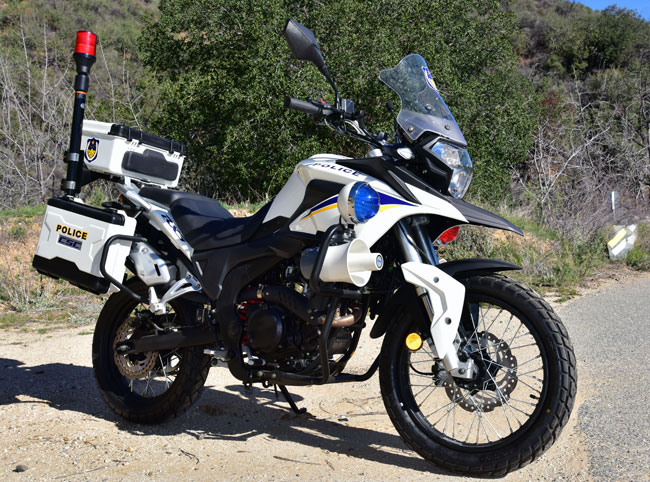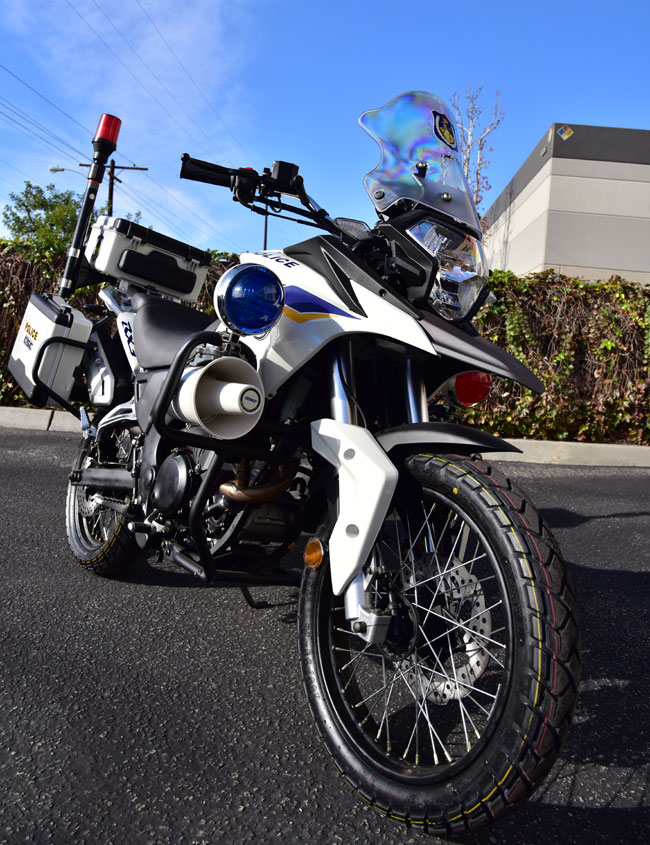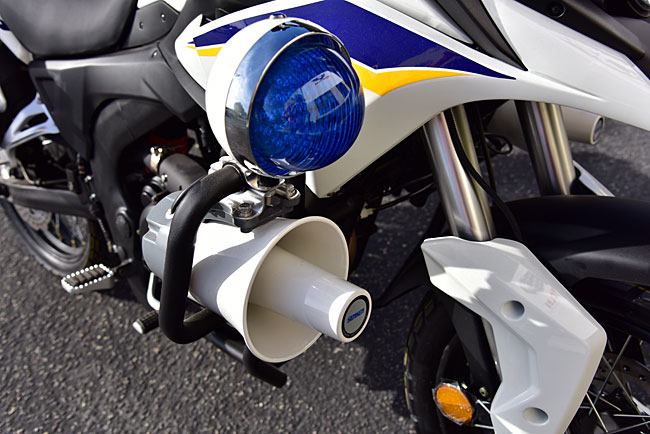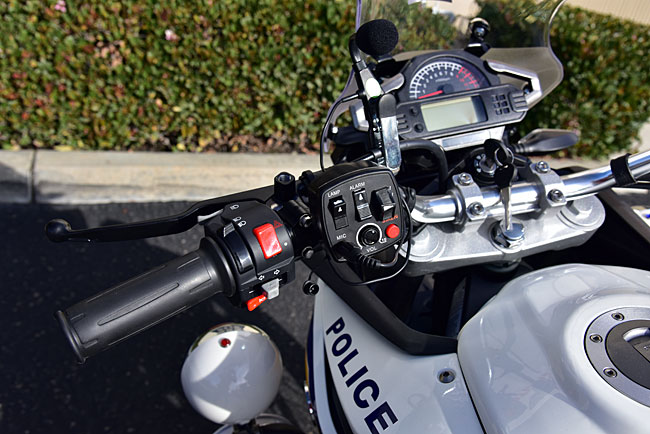 A few years ago when visiting the Zongshen plant in Chongqing, I spotted an RX3 set up as a police bike. It caught my eye for several reasons. First and foremost, it was a snappy looking motorcycle. I had written the police motorcycle book a few years ago and I was naturally interested in any police motorcycle. I thought (mistakenly, as it turned out) that there might be a market for such a machine in the US. And finally, I was interested in the bike because of something I had discovered while researching police motorcycles: Police motorcycles generally had beefed-up electrical systems (particularly with regard to alternator output) because of the added demands of sirens, emergency lights, radios, and more.
A few years ago when visiting the Zongshen plant in Chongqing, I spotted an RX3 set up as a police bike. It caught my eye for several reasons. First and foremost, it was a snappy looking motorcycle. I had written the police motorcycle book a few years ago and I was naturally interested in any police motorcycle. I thought (mistakenly, as it turned out) that there might be a market for such a machine in the US. And finally, I was interested in the bike because of something I had discovered while researching police motorcycles: Police motorcycles generally had beefed-up electrical systems (particularly with regard to alternator output) because of the added demands of sirens, emergency lights, radios, and more.
I asked my good buddy Fan about the electrical issues on the 250cc RX3 police bike, and he told me that the police version had a 300-watt alternator (the standard bike had a 220-watt alternator). The standard 220 watts wasn’t bad, and that was actually more than the ’06 KLR I owned at the time provided. ADV riders like big alternators, because we add stuff like driving lights, heated vests, heated grips, cell phone chargers, and more. At the time, I was coordinating the first CSC RX3 order, and I asked if the police alternator could be had on the CSC civilian bikes. “Sure, no problem,” Fan answered. That was a big deal, and it cinched the sale for more than a few riders when CSC brought the RX3 to America.


 I was still pumped about the police bike, though, and I convinced CSC to bring the RX3-P to the US for a trial marketing period. You can see my enthusiasm in the video we put together on the bike…
I was still pumped about the police bike, though, and I convinced CSC to bring the RX3-P to the US for a trial marketing period. You can see my enthusiasm in the video we put together on the bike…
I thought the idea of a 250cc, urban-oriented police motorcycle made a lot of sense for the United States, but it wasn’t to be. We shipped a bike to the NYPD (I knew they used Vespa scooters, and the RX3-P cost a hell of a lot less than a Vespa), we loaned a bike to a California police agency up north, and I called and visited a bunch of police departments. It was a lot of fun, and I enjoyed riding the RX3-P to visit agencies in So Cal. Traffic just opened up on the freeway. Nobody tailgated me. I put my blinkers on and people slowed to make room for me to change lanes. Traffic generally dropped to the speed limit wherever I went. At one of the agencies, a police captain told me I wasn’t supposed to be riding around with police emergency lights and such on the bike. “It’s okay,” I told him. “I only put that stuff on if somebody won’t move over or if they’re really being an asshole.” We had a good laugh about that.
My enthusiasm notwithstanding, I couldn’t close the deal with any of the police departments. There were a variety of reasons, mostly centered around the RX3-P’s newness and the fact that US motor officers like big bikes (Beemers, Harleys, Honda’s ST1300, and the like). Or maybe I was just a lousy salesman. Who knows?
There are a lot of good reasons for a smaller police motorcycle with offroad capabilities and Zongshen wanted to make it happen, but it just wasn’t meant to be here in the US. That’s unfortunate. A Zongshen police bike is about the same price as a civilian RX3 (roughly $4K); a new Harley or BMW police motor is five to seven times that amount. And the maintenance costs on a police motorcycle are very high. The needs brakes, clutches, and tires about every three months, and most agencies have that work done at a Harley or BMW dealer (places not known for their low service fees). One of the police execs I spoke with told me it actually costs a department more to keep a police motorcycle on the road than a police car. Do the math.
 We publicized the bike big time on the CSC blog, and I think that got noticed around the world. The RX3-P found a home with several large police departments in Asia and South America. That’s a good thing, because it’s a great bike. I’d still like to see it happen here in America. I imagine Zongshen will introduce a police version of their RX4, and maybe that larger bike will have a better chance at breaking into the US police motorcycle market. Someday. Maybe. We’ll see.
We publicized the bike big time on the CSC blog, and I think that got noticed around the world. The RX3-P found a home with several large police departments in Asia and South America. That’s a good thing, because it’s a great bike. I’d still like to see it happen here in America. I imagine Zongshen will introduce a police version of their RX4, and maybe that larger bike will have a better chance at breaking into the US police motorcycle market. Someday. Maybe. We’ll see.
